The Kibbutz, Post-Utopia
One hundred years ago, Yosef Bussel, Yosef Baratz, eight other young men, and two young women arrived in Umm Juni on the southern shore of Lake Tiberias. There they established a kommuna, a small agricultural settlement that was to become the first kibbutz. Bussel, who drowned tragically in the lake a few years later, was 21 at the time. Baratz was the same age. They and their fellow pioneers, all Zionists and socialists, had come from Russia a few years earlier. Besides their ideological attractions to the communal agricultural lifestyle in Palestine, they were moved by pragmatic concerns: their common lack of capital or experience to engage in individual farming.
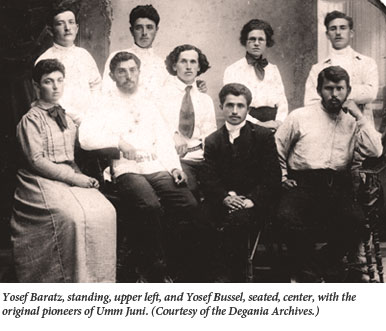 The anniversary has been duly remembered throughout Israel and celebrated with special fervor in Degania, as Umm Juni was quickly renamed, “after the five different kinds of grain (deganim) that are grown here.” At least this is what Bussel reported to Arthur Ruppin, the head of the World Zionist Organization’s Palestine Office, in a letter cited in the volume under review. The most massive of a number of tomes commemorating the anniversary, 100 Shnot Kibbutz (100 Years of Kibbutz), is part narrative, part album. Edited by Eliezer Saks, it is lavishly and attractively produced, with many maps, perhaps too many illustrations, and a preface by the president of Israel, Shimon Peres. It has brief sections about the development of kibbutz agriculture and industry, kibbutz culture and education, and how festivals are celebrated on a kibbutz. But the bulk of the book consists of profiles, usually a page long, of individual kibbutzim—265 of them.
The anniversary has been duly remembered throughout Israel and celebrated with special fervor in Degania, as Umm Juni was quickly renamed, “after the five different kinds of grain (deganim) that are grown here.” At least this is what Bussel reported to Arthur Ruppin, the head of the World Zionist Organization’s Palestine Office, in a letter cited in the volume under review. The most massive of a number of tomes commemorating the anniversary, 100 Shnot Kibbutz (100 Years of Kibbutz), is part narrative, part album. Edited by Eliezer Saks, it is lavishly and attractively produced, with many maps, perhaps too many illustrations, and a preface by the president of Israel, Shimon Peres. It has brief sections about the development of kibbutz agriculture and industry, kibbutz culture and education, and how festivals are celebrated on a kibbutz. But the bulk of the book consists of profiles, usually a page long, of individual kibbutzim—265 of them.
A lot of the grainier photos in this volume are from the time that I knew the kibbutz from up close. Not long after arriving in Palestine in 1938, I went to Kibbutz Ha-Zorea, Sha’ar Ha-Golan, and Ein Shemer for agricultural training. I was a member of Kibbutz Shamir from1940 to 1941, when it split and I retuned to Ha-Zorea, remaining there until 1944.
At one time or another I visited at least half of the fifty or so other kibbutzim that existed in those days. One could always get a meal in the dining room and a place to sleep somewhere. I remember a trip to Degania, which at the time could be reached most conveniently by rail, even though the train did not even stop at Zemach, just northeast of the kibbutz, but merely slowed down enough for me to jump off before it continued to Damascus. I recall my surprise upon meeting some of the founders of the first kibbutz. These legendary figures were not even very old—men and women in their late forties. I remember the infernal heat in the Jordan Valley (no one had heard of air conditioning) and took part in one of the first banana harvests. I recall that some of my fellow members were eating 25, perhaps 30 bananas a day, a remarkable feat even though the fruit was then relatively small.
Having decided after a number of years that kibbutz life was fascinating (and for a man in his early twenties like me, highly educational) but not the way I wanted to spend the rest of my days, I announced my departure and was given by Ha-Zorea the usual farewell gift—five pounds sterling, a mattress, and an iron bed frame. My attitude toward the movement since then has been one of critical sympathy. I frequently visited my erstwhile comrades there when I still lived in the country, once or twice in the company of my Jerusalem neighbor Gershom Scholem, several of whose boyhood friends lived in Kibbutz Beit Zera (originally called Markenhof). Conditions were primitive, and there was an acute housing problem. Even in my time, couples frequently had to share their tent with a third member of the collective, called a primus for reasons unknown to me. (Unfortunately, the kibbutz dictionary section in Saks’ book is not certain about the origin of that term either.)
These were the early “heroic” days of “tower and stockade” (choma u-migdal) described in detail in the book, of nighttime horas and a variety of fantasiot (spontaneous parties). Everyone was poor and sometimes went to bed hungry, but the atmosphere was one of optimism, of being part of a great and growing movement, engaging in a major social project such as had never been tried before. There was no feeling of loneliness, for every week ships anchoring in Haifa would bring reinforcements, human and material. The world war, of course, brought a halt to all this, but the feeling was that at its end everything would continue as before. The news about the great tragedy in Europe came only toward the end of the war, and it took even longer to understand its full meaning.
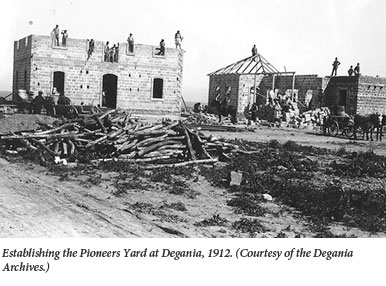 I was no longer a member when the War of Independence came in 1948, but my work as a war correspondent led me to kibbutzim in the north and south of the country. Reflecting on the course of events in later years as a historian who had also been an eyewitness, I was always certain that without the Palmach, essentially a little kibbutz army, the War of Independence would not have ended as it did. Although I was not a military expert (and never became one), I still realized that much of what I saw was amateurish and sometimes fatal. Nonetheless, what was lacking in experience was made up for in enthusiasm.
I was no longer a member when the War of Independence came in 1948, but my work as a war correspondent led me to kibbutzim in the north and south of the country. Reflecting on the course of events in later years as a historian who had also been an eyewitness, I was always certain that without the Palmach, essentially a little kibbutz army, the War of Independence would not have ended as it did. Although I was not a military expert (and never became one), I still realized that much of what I saw was amateurish and sometimes fatal. Nonetheless, what was lacking in experience was made up for in enthusiasm.
The tribulations of the kibbutz movement began with the establishment of the state. This process has frequently been described and analyzed. The kibbutzim were neither able nor willing to absorb the masses of new immigrants who did not share their idealism and/or values, the spirit of sacrifice and pioneering. At the same time the kibbutzim no longer attracted many young Israelis from outside the movement, as they had in earlier years. The departure of many members led to a diminution of the specific weight of the kibbutz in Israeli society. There were splits, like those in Givat Chaim and Ashdot Ya’akov. Had it to do with Stalin or with Israeli domestic policies in the 1950s? Today hardly anyone remembers the reasons for these break-ups, but at the time the conflicts were quite bitter.
These were the years of tzena (austerity); the country suffered from an economic crisis and so did the kibbutzim. And as the original kibbutzniks aged, living conditions that had seemed almost normal to 20-year-olds became unacceptable to 50-year-olds. Agriculture, even though its professional level had immensely improved, could not provide the basis for a higher standard of living. Many kibbutzim had to look for other, more profitable sources of income, such as industry and tourism, but they were at first slow to do so. All over the world there was a crisis of agriculture, and the state had to step in and help. In this respect the Israeli situation was by no means unique, but it led kibbutzim to become dependent on the state, and as governments unfriendly to the kibbutz movement came to power the situation grew worse.
In the 1970s, an anti-kibbutz ideology developed gradually. A kibbutz was a utopian enterprise; the kibbutzniks were parasites. Menachem Begin famously referred to its members as “gentlemen with swimming pools.” Socialism had been Israel’s great misfortune, it had been holding back the Israeli economy. Had the laws of the market prevailed, had there been competition, the economy of the country would have been much stronger, many more people could have been absorbed. Perhaps even many of the six million could have been saved.
Some of this criticism was correct; some was arrant nonsense. The kibbutz was, of course, a utopian undertaking based on a radical egalitarian ethos that could work only for an idealistic elite. But there was not that much Jewish money around at the time, and those who had it preferred to invest it elsewhere. The 1930s had been a period of economic crisis all over the world, and the number of immigration certificates issued depended on the goodwill of the British mandatory government, not the state of the economy. In brief, there was no market alternative to the kibbutz and other “socialist” enterprises when they were founded.
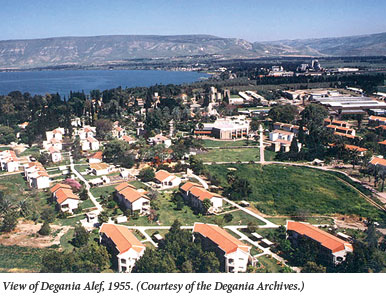 The kibbutz crisis reached its climax in the 1980s against the background of a general crisis affecting the Israeli economy, which witnessed an inflation rate of 400 percent. Kibbutz management acted foolishly and irresponsibly when it took out bank loans. When the economic situation changed, the dust had settled, and the banks performed their legerdemain, the kibbutzim found themselves saddled with $6 billion of debt, which took more than a decade to restructure. It was during these years that the kibbutz movement changed almost beyond recognition—three quarters of the kibbutzim gave up their old egalitarian way of life, and differential wages were introduced. Private property became the rule, meals and everything else had to be paid for, but a safety net was kept for hardship cases. The “new kibbutz”
The kibbutz crisis reached its climax in the 1980s against the background of a general crisis affecting the Israeli economy, which witnessed an inflation rate of 400 percent. Kibbutz management acted foolishly and irresponsibly when it took out bank loans. When the economic situation changed, the dust had settled, and the banks performed their legerdemain, the kibbutzim found themselves saddled with $6 billion of debt, which took more than a decade to restructure. It was during these years that the kibbutz movement changed almost beyond recognition—three quarters of the kibbutzim gave up their old egalitarian way of life, and differential wages were introduced. Private property became the rule, meals and everything else had to be paid for, but a safety net was kept for hardship cases. The “new kibbutz”
(a euphemism) came into being.
I suspect the process of privatization would have happened in any case. The old kibbutz model no longer fit into Israel’s new economic world, a world in which self-interest came to be recognized not as a capitalist prejudice but a part of human nature—at least at this juncture in evolutionary history. Voluntary collectivism was on the way out. But if it had not been for the economic crisis, the transition would have been slower and less acrimonious.
In the 1980s and 1990s, the epitaph of the kibbutz was written. As recently as 2007, Gary Becker, a Nobel Prize-winning economist at the University of Chicago, summarized his impressions of a few days’ visit: the classical kibbutz system would fade. (The socialist Franz Oppenheimer had predicted this in 1926.) Only a few years have passed but I suspect that today Becker would reach slightly more cautious conclusions—and not because he can be suspected of having changed his views on the maxim “from each according to his or her ability.” (I always thought the phrase was coined by Louis Blanc in 1840—though Becker attributed it to Marx several decades later).
Our current perspective has changed because we have witnessed far more massive debt crises of late, not just in Greece, Ireland, and Portugal, but in most of Europe, not to mention the United States. The sums involved are no longer measured in millions or billions but in trillions. The kibbutz experience may even turn out to offer some historical lessons about how to confront a debt crisis.
In any event, the new kibbutz (or whatever we call it) shows no sign of disappearing. Five years ago, I visited old friends at Kibbutz Ha-Ma’apil, home to what was once the Israeli championship volleyball team. The number of members had greatly shrunk, and the median age couldn’t have been lower than 62. Today its membership has increased by more than fifty percent and the average age is considerably lower.
Kibbutz Lehavot Ha-Bashan in the Galilee now has more young families who are “private settlers”—over 150—than it has kibbutz members. It will take no more than a few years before the two parts merge into a yishuv kehilati (a communal, but not collective settlement). Thousands of people have joined the new kibbutz, some are banim chozrim (kibbutz children returning from the cities), but others are new and are coming for reasons that have nothing to do with the obsolete teachings of 20th-century Zionist theoreticians like A.D. Gordon or Ber Borokhov. The air is better and so is the security situation. Moreover, the kibbutz schools tend to be superior to those of neighboring towns. The new set-up seems to work.
One of the things Saks’ book does very well is to show just how far the kibbutz movement has come. I remember how desperately the secretary of Kibbutz Shamir tried to obtain a loan of a few hundred British pounds in 1940, not to mention how demeaning it was for him to apply for such a small sum. Today, Shamir is one of world’s leading producers of contact lenses, with a value in the hundreds of millions. It employs some 1,400 people, and its shares are traded on the New York Stock Exchange. Ma’agan Michael and Sassa employ even more, Na’an and Mishmar Ha-Emek are also big employers who produce rubber and plastic products for irrigation and other purposes, vegetarian and baby food, ornamental fish for Japan, and other products. But even if industry has become the mainstay of the kibbutz, it doesn’t seem to have become its pride. In the hundreds of profiles of individual kibbutzim in 100 Shnot Kibbutz, there are countless photos of grain waving, folk dancers doing the hora, handsome communal dining halls, and placid residential quarters, but only two photos of factories.
Less than two percent of the population of Israel now lives in kibbutzim, but their share in industrial and agricultural exports is at least ten times that, though not all of the kibbutzim have prospered and profited in equal measure. Some years ago Kibbutz Ha-‘Ogen was considered the most successful entrepreneur, but it has fared less well lately, whereas Ma’abarot on the old Haifa-Tel Aviv road, which has had its share of economic woes, now belongs, I am told, to the millionaires’ club. Economic success was not the main ambition of founders like Bussel and Baratz, but it is a precondition of survival in the modern world. Epitaphs, under the circumstances, seem premature. The old kibbutz is history, but its post-utopian successor may last a long time.
Suggested Reading
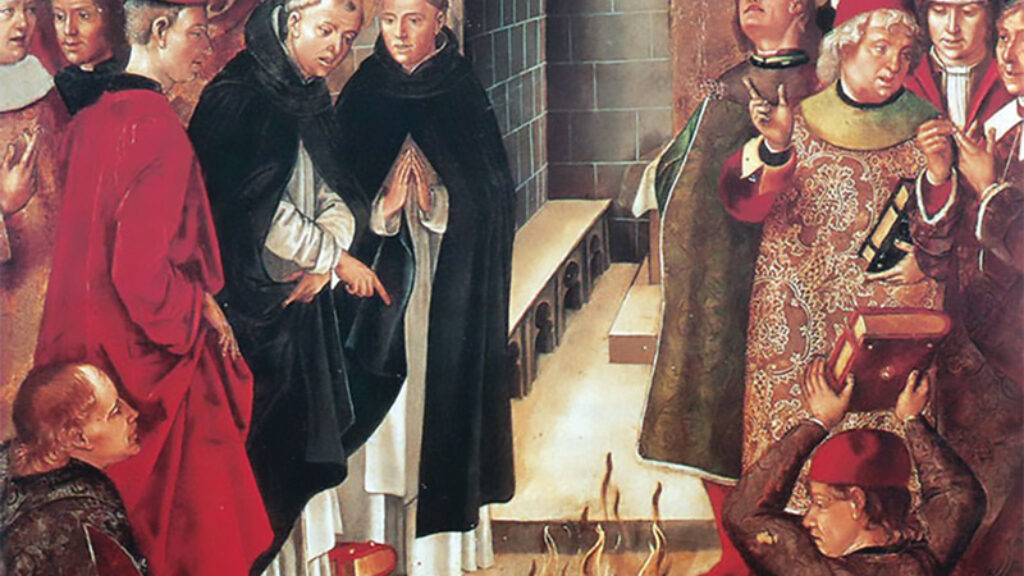
The Integralists and Us
A Jewish colleague once asked Harvard Law Professor Adrian Vermeule, “In a fully Catholic polity, the sort you would like to bring about, what would happen to me, a Jew”? “Nothing bad,” Vermeule replied. OK, let’s see.
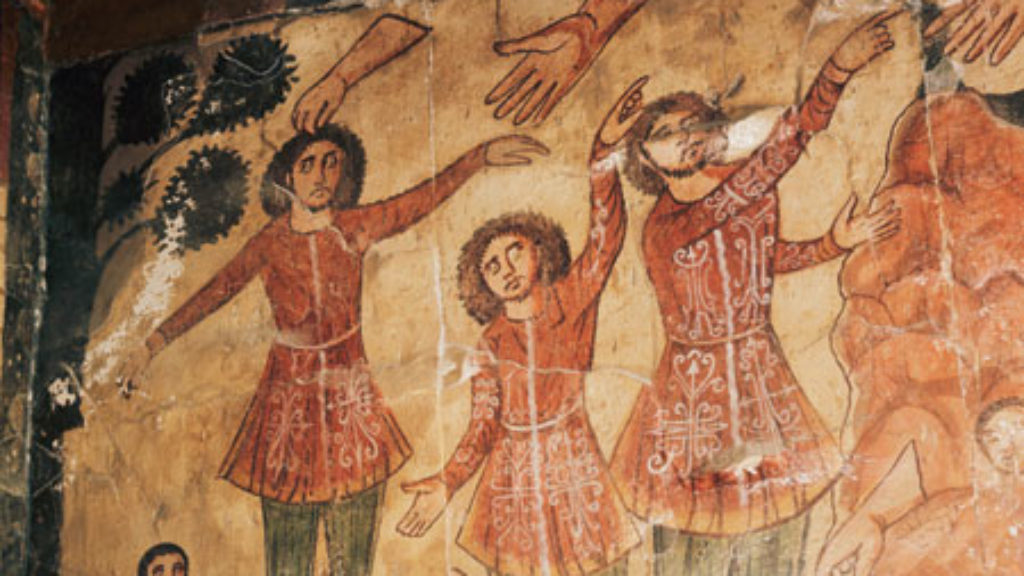
It’s Spring Again
A startling painting on the walls of the ancient synagogue at Dura Europos depicts some 2nd-century Jews who have, until recently, been dead and who look very surprised to have been reconstituted and revived.

Lilith and the Knight
Demons, dragons, and a “Tel Aviv hipster in King Arthur’s Court.”

Jews of Dune
In Chapterhouse: Dune, the sixth book in the Dune series and the last Herbert wrote before his death, the Jews show up.
Comments
You must log in to comment Log In